NFT platform to help users create, manage, and launch NFT collections without technical knowledge.
CASE STUDY
In this case study, I’ll detail how I transformed the founders’ vision into a scalable, user-friendly beta platform. As a freelance product designer, I created an intuitive experience, designed a flexible interface for all skill levels, and interviewed NFT platform users to ensure the solution met their needs.
Client:
Certhis
Year:
2023
Role:
UX Designer (Freelance)
Tools:
Adobe XD, Illustrator, Miro
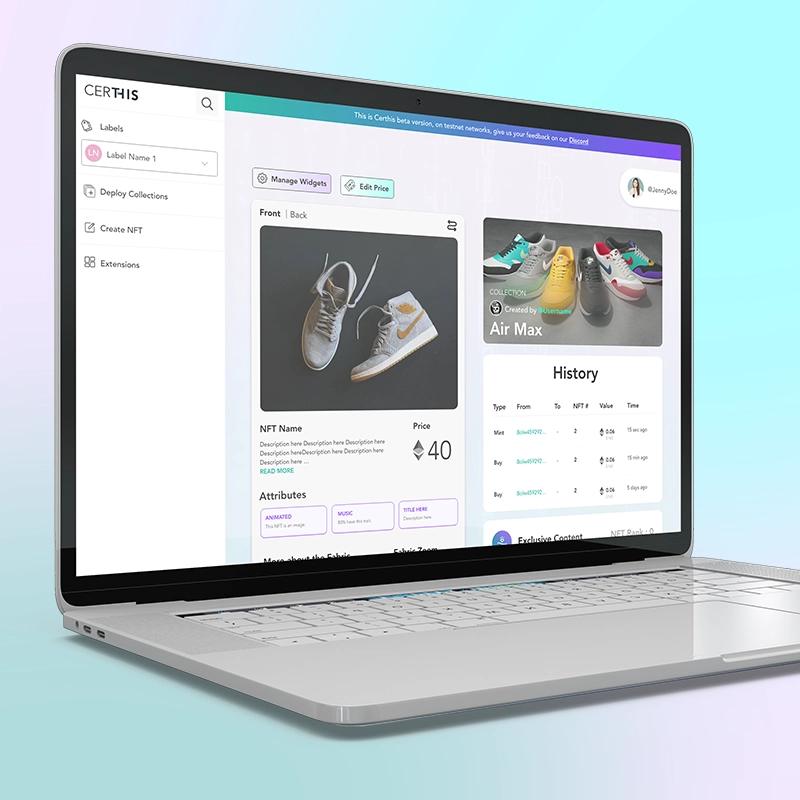
PROJECT OVERVIEW
Certhis: an early-stage startup willing to revolutionize the NFT creation, management, and deployment.
Their mission was to make NFTs (non-fungible tokens) accessible to everyone, eliminating the barriers of complexity and cost that deter many creators, businesses, and developers from entering the space.
As the product designer for Certhis, I transformed a complex blockchain concept into an intuitive platform where creators, businesses, and developers can seamlessly manage their NFT lifecycle. Through extensive research and stakeholder collaboration, I developed a scalable solution that makes sophisticated NFT tools accessible to users of all technical backgrounds.
PROBLEMS
Creating, managing, and deploying NFTs often requires technical expertise, familiarity with blockchain platforms, and interaction with tools like smart contracts, which can be intimidating for non-technical users.
Technical Barriers
The NFT space requires blockchain expertise, making it inaccessible to mainstream users and businesses
Poor Infrastructure
Current platforms lack essential features for NFT management, including automated minting and cross-marketplace publishing

Limited Options
High fees and limited options create frustration and limit users from creating and minting their NFTs.
Developer Enablement
Limited resources and APIs discourage developers from building plugins and extending functionality.
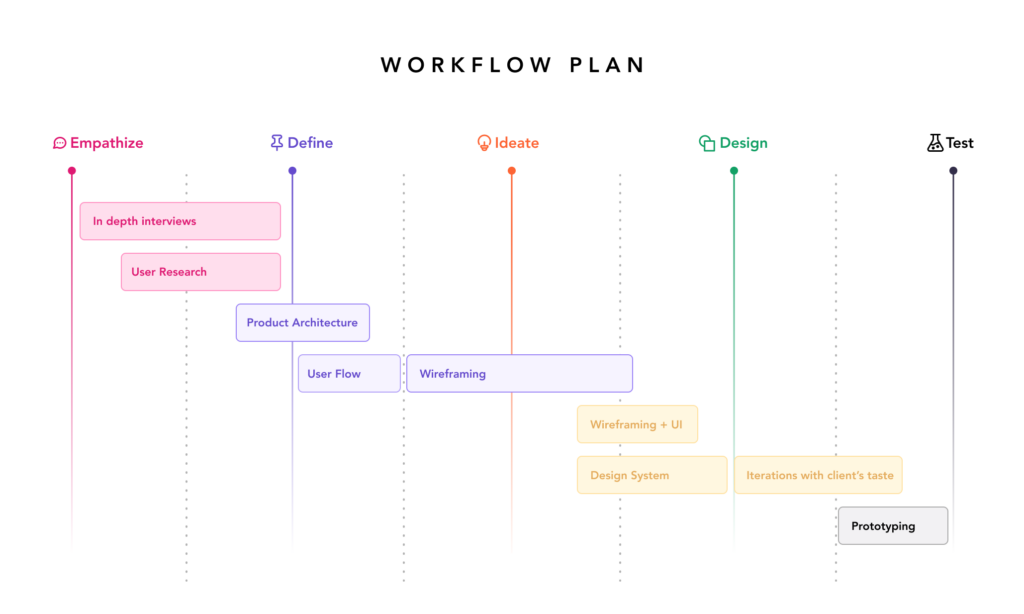
EMPATHIZE – RESEARCH & DISCOVERY
User Research
During the discovery phase, I conducted user research to uncover pain points and align on the project vision.
- Analyzing conversations on Discord channels
- Interviewing NFT creators (direct messages and video calls)
- Talked with the Marketing consultant of Certhis that did competitor analysis
- Talked with the 2 co-founders that knew well the NFT space.
Empathy mapping and user journey analysis (on existing platforms) helped clarify target audiences and their challenges, while personas guided a user-centric approach.
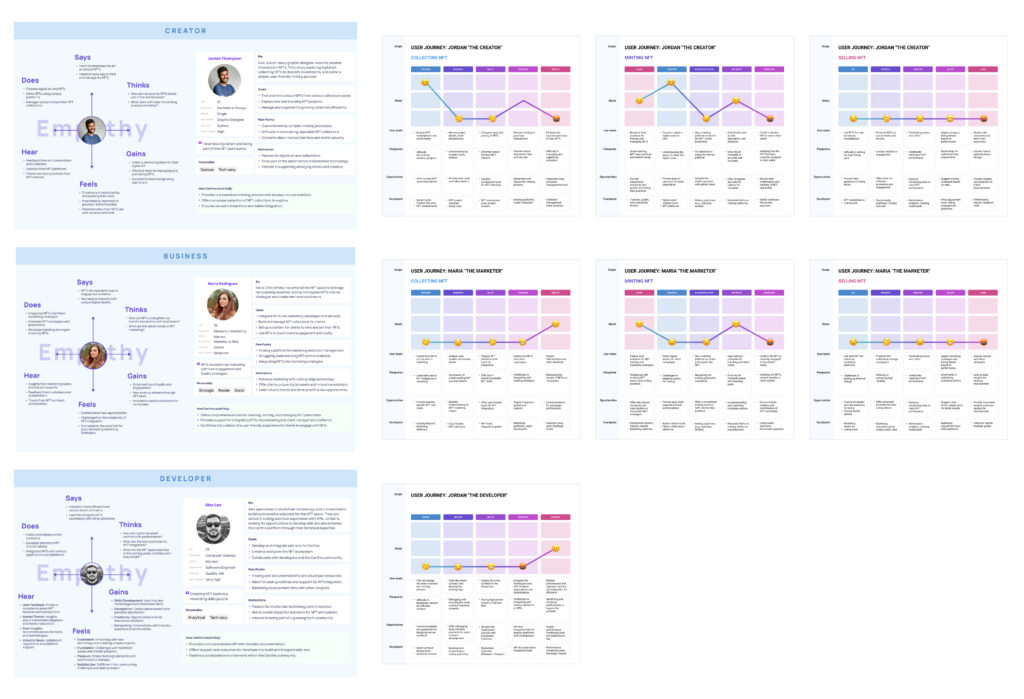
Key Insights
- Creators and Minters
- Novice: Found NFT creation intimidating due to technical jargon and lack of guidance.
- Creators that knew NFT platform: had a hard time to manage, organize their NFTs and track the performance of their NFTs.
- Businesses
- had difficulty to find a tool intuitive enough to enter the NFT space
- had a hard time to analyze and refine NFT strategies
- struggled to integrate NFTs into their existing workflows.
- Developers
- were challenged in integration with various platforms
- wanted clear API documentation, flexibility, and examples to start building plugins quickly.
Market Research
- Studied competitors like OpenSea, Nigtykit, and Bueno to identify gaps in cretors, businesses and developer experiences.
- Observed trends in the NFT space, such as the rise of sustainable and low-cost blockchain solutions and the increasing role of developer communities in extending platform functionality.

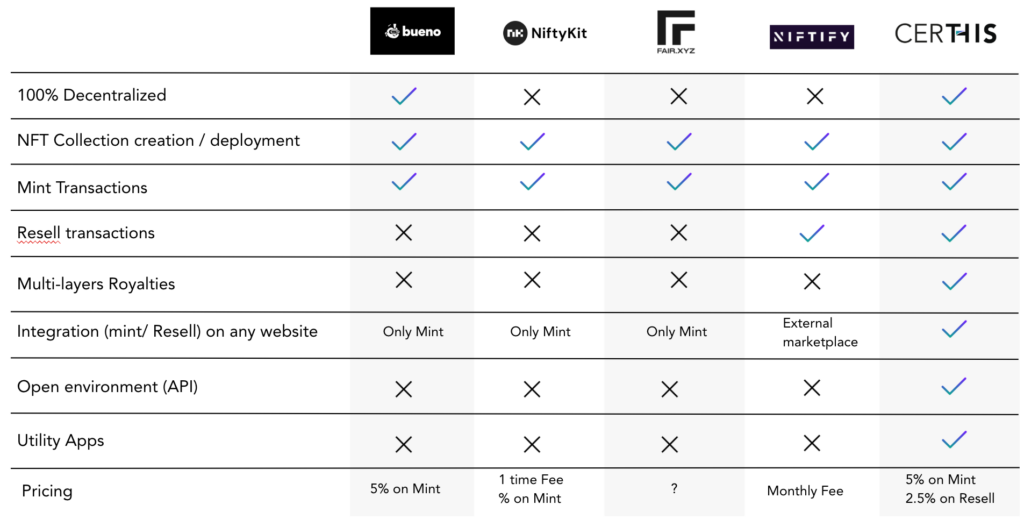
DEFINE
Based on research, I defined the core design goals:
- Simplify the Experience: Create intuitive workflows for NFT creation, management, and deployment.
- Democratize Access: Reduce technical barriers for non-expert users.
- Support Scalability: Ensure the platform could grow with user needs.
- Enhance Trust: Build a secure and visually engaging interface that instills confidence.
- Empower Developers: Provide robust APIs, detailed documentation, and easy-to-use tools for creating plugins and integrating Certhis functionality into external applications.
Defined Problem Statement: How might we make NFT creation and management accessible and intuitive for non-technical users while meeting the needs of businesses and developers?
IDEATE
Brainstorming / Workshop / User Flow & Wireframes Discussions
I explored various concepts through sketches and 2 brainstorming sessions to align the team on the product architecture and user flow.
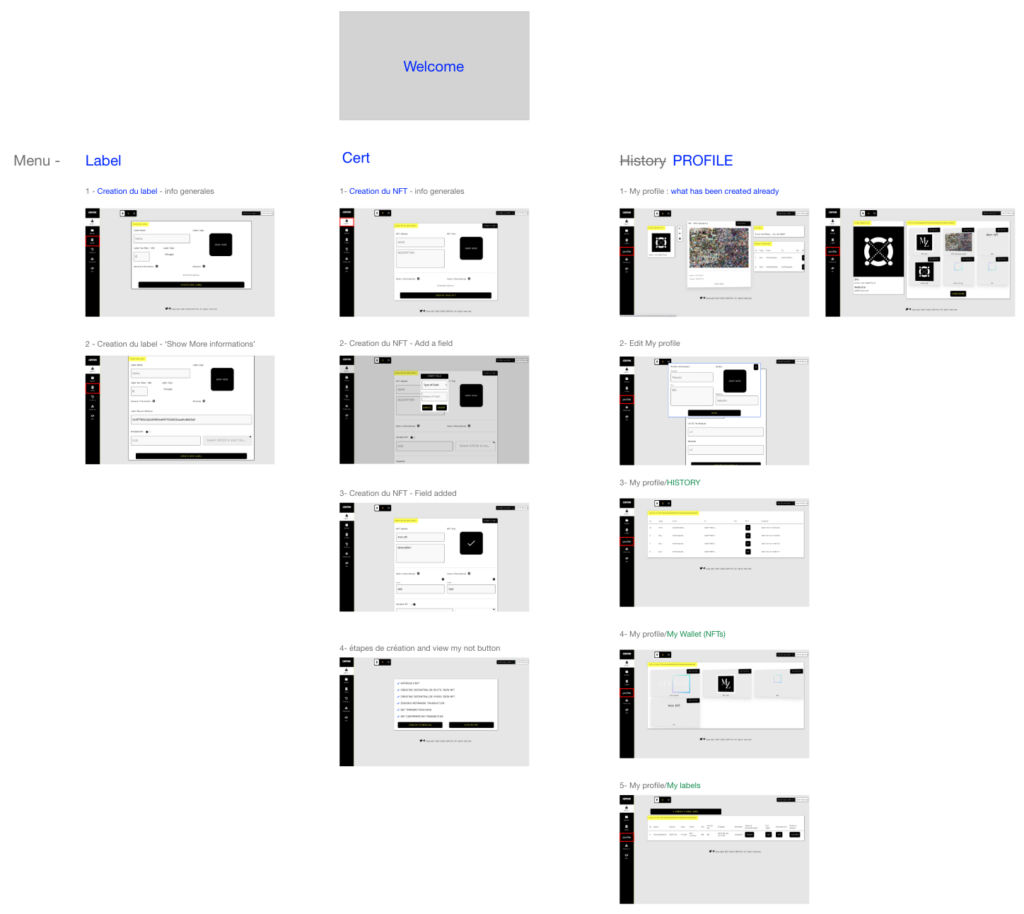
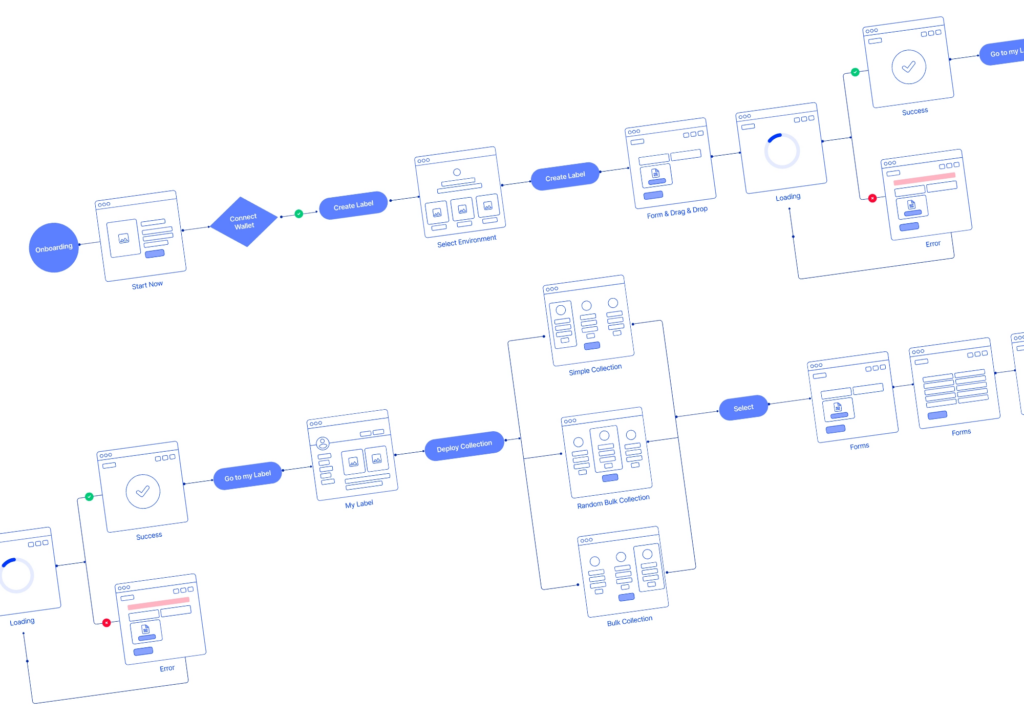
The goal was to prioritize features based on feasibility and market relevance.
After these 2 sessions of brainstorming, we realized we had too many functionalities so I advised to simplify the MVP and focus on a more lean product.
Business Decision
This led to two distinct MVP options:
- Certhis Mint Explorer (B2C): For creators to explore, mint, and sell NFTs.
- Certhis Business Manager (B2B): A dedicated tool for creators and businesses.
The founders decided to take a step-back to think about which direction to take for the launch as 2 products might be too ambitious with the ressources they had at the time for the deadline they were aiming.
Due to their constant conversations with investors and the evolving NFT market, the founders decided to focus on the Certhis Business Manager.
DIRECTION AND VALUE PROPOSITION
Certhis Business Manager stands out by offering:
- Zero-code NFT collection deployment
- Instant blockchain integration
- Intuitive, no-code customization
- Seamless website embedding
- Free minting solutions
Unlike the competitors, the all-in-one platform transforms NFT creation into a simple, user-friendly process.
DESIGN
First experiments
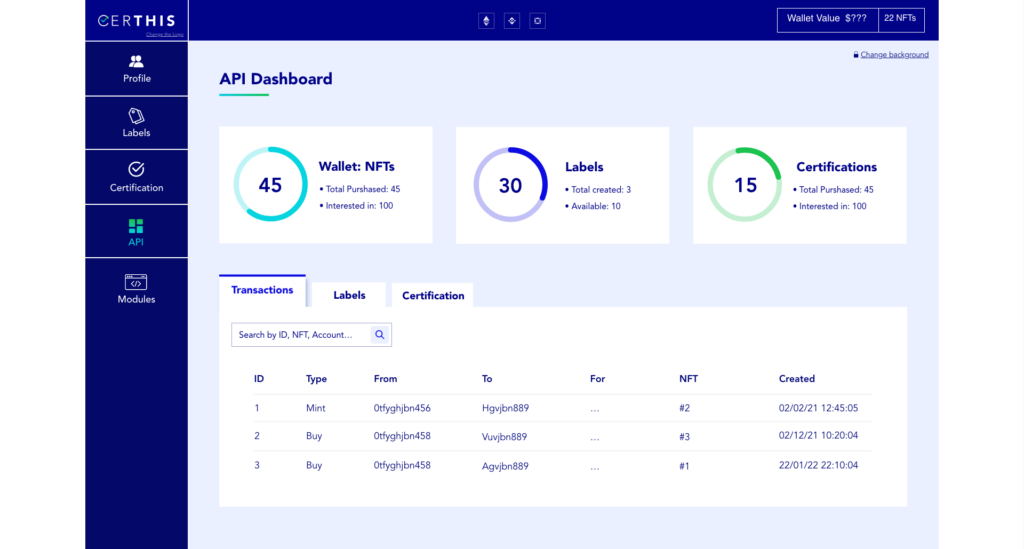

Art Direction
To be disruptive from all the competitors, we decided to develop a look & feel that was:
Tone
Friendly, Approachable, Clear and Easy to understand.
Focusing on Simplicity. Not Technical
Look and Feel
Welcoming aesthetics: conveying warmth and openness.
Approachable and Human. Not Futuristic
Final UI
Onboarding Screens
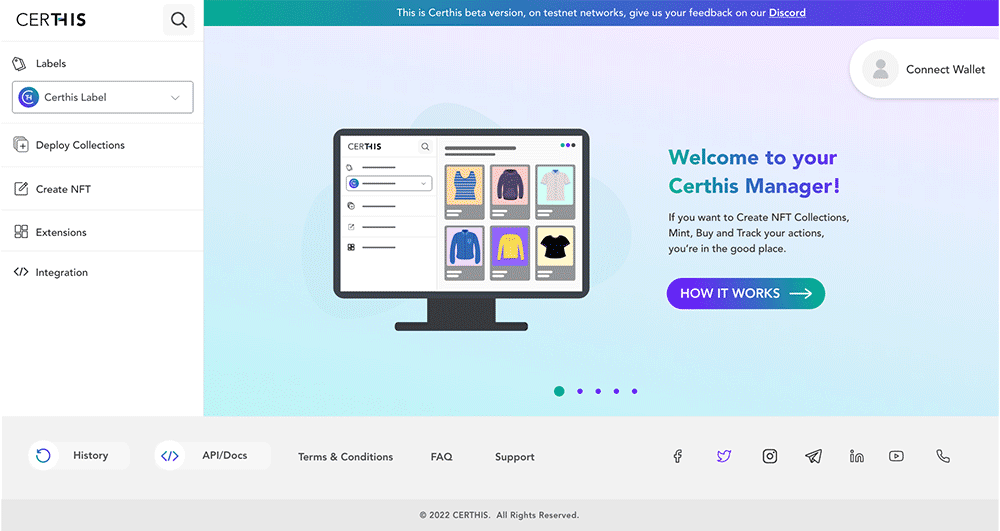
Product Overview
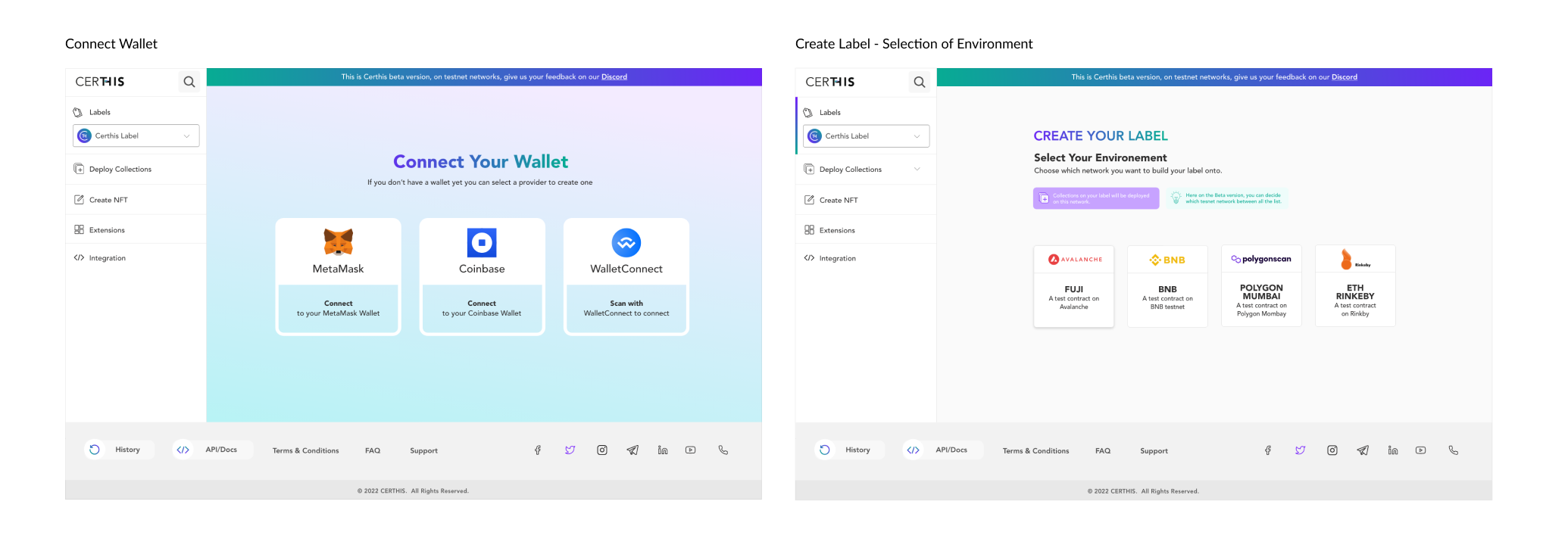
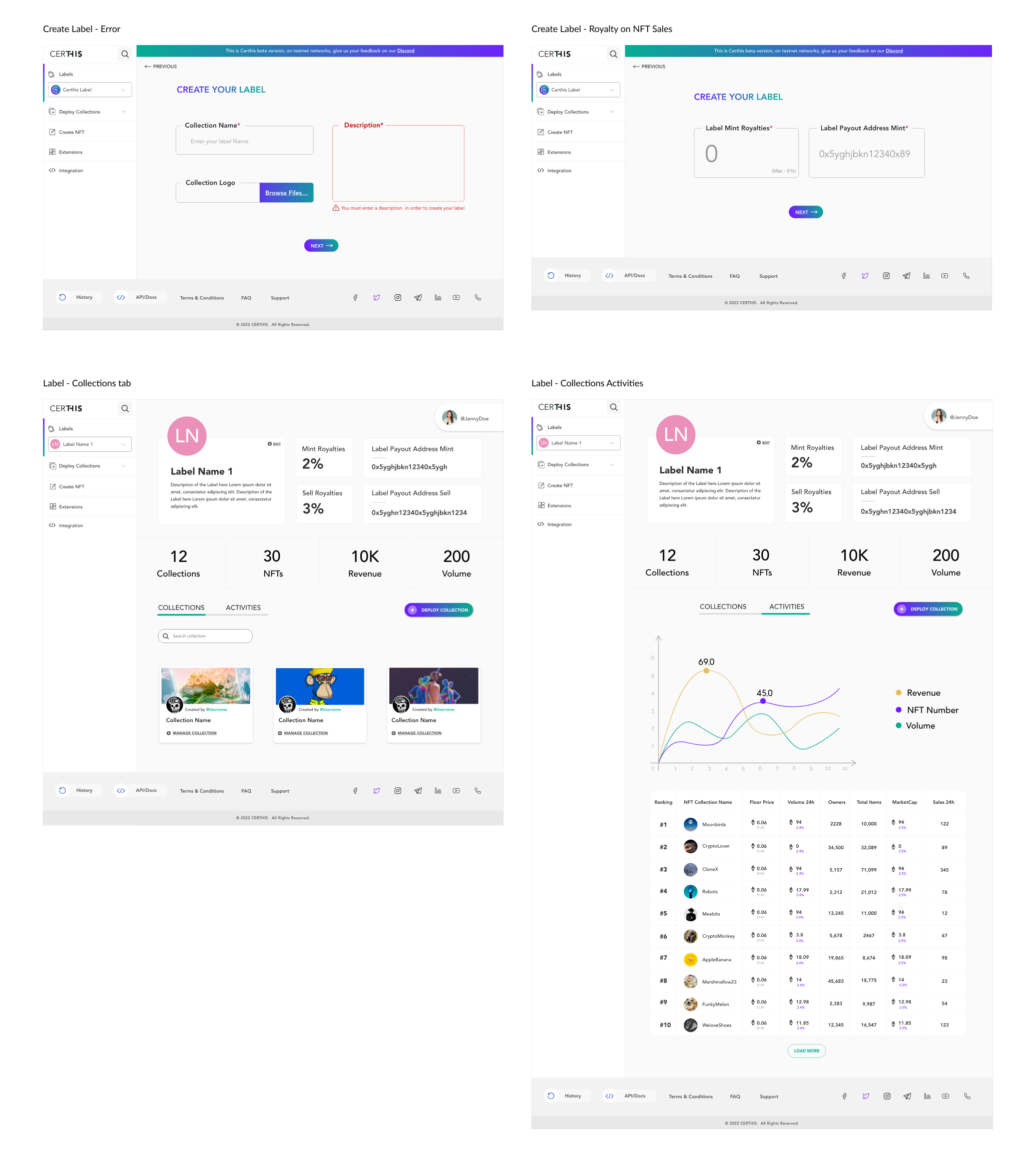

TESTING AND REFINEMENTS
Normally, I do test and iterate from the user feedbacks but in this case this only happened from stakeholders feedbacks.
The CTO explained me that once they were publishing on the blockchain the beta version they had no options to iterate the design until a second full release that they were planning for later.
This is where my freelancer role stopped, as they could continue without me.
RESULTS AND IMPACT
- Stakeholder Feedback: Positive reception for the design and intuitive workflows.
- Scalability: The design supports future enhancements, such as advanced analytics and additional blockchain integrations.
- Usability: 60% of users found the platform easier than others to navigate during the first launch. This has been improved in the second release.
- Art Direction: While the UI decisions of being disruptive made sense for the easy adopters, the businesses got used to the features so Certhis changed it for a more market-fit look & feel (more dark and professional).
- Developer Adoption: 80% of developers reported that the documentation and tools were clear and comprehensive.
REFLECTION AND LEARNINGS
Challenges:
- Designing for a technically complex product while ensuring simplicity for users.
- Translating the founders’ vision into a cohesive product from the ground up, navigating the uncertainties and frequent changes inherent to early-stage development.
Lessons Learned:
- User research is critical to identifying pain points and validating assumptions, ensuring the product addresses real needs before launch.
- Early-stage alignment is key—building consensus, maintaining transparency, and clearly communicating the reasons behind changes are essential for a unified and efficient workflow.